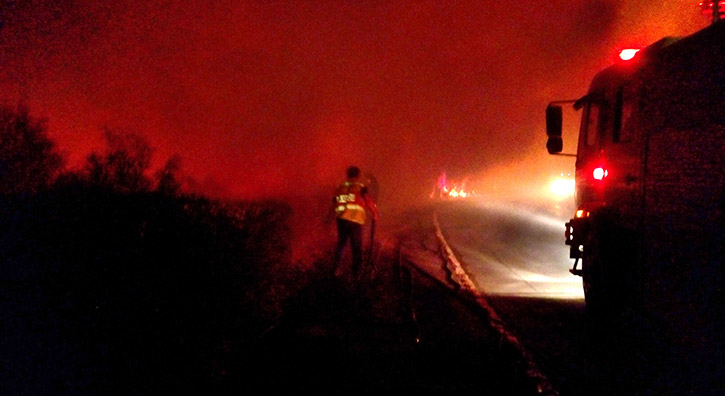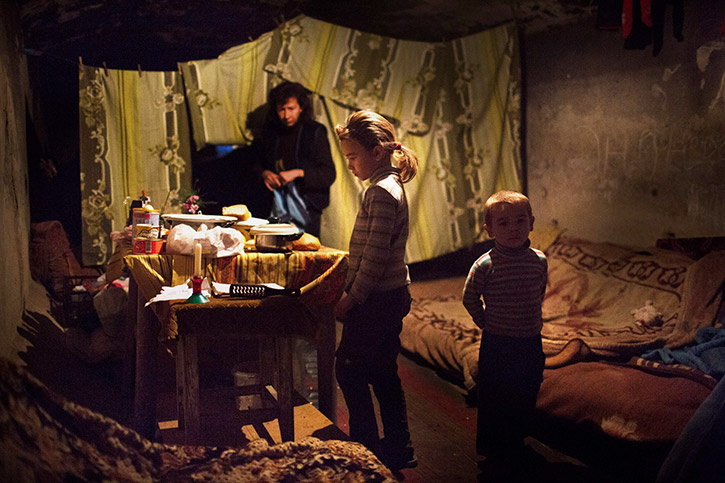CRJ issue 10:3 out now
Security and terrorism
Is humanity the collateral damage of terror? Christine Jessup calls for governments and societies to react in a measured manner to events such as the Martin Place siege in Sydney, Australia. She warns that instinctive reactions, categorisations and actions may not be the most constructive way to prevent future incidents.
Women’s roles in (countering) violent extremism. Mehdi Knani of the OSCE examines measures to prevent and counter violent radicalisation among women and girls, questioning whether the issues have been properly addressed.
Three days, three attacks, three victories. Christophe Libeau, Hazmat and CBRN expert, describes the operational, tactical and strategic operations during the January terrorist attacks in France, when the Charlie Hebdo offices were stormed, a police officer was shot and simultaneous hostage takings in Paris left several people dead.
Hardening businesses against terrorism. Chris Phillips, MD of the International Protect and Prepare Security Office, says that it is all too easy for a community or business to think there is nothing they can do to protect themselves and their operations from terrorist attacks.
SMEs also need to protect themselves. One of the main challenges is to address the feelings of hopelessness, the fatalistic viewpoint of many small business owners that nothing can be done to protect themselves against terrorist attacks. Lina Kolesnikova provides practical examples of how SMEs can face the threat head on.
Tough lessons from Pakistan school attack. December 16, 2014 saw one of the worst terror attacks in Pakistan’s history, says Luavut Zahid, who describes what happened after seven gunmen entered a school, opening fire on pupils and staff.
Asymmetric attacks at sea. Dr Dave Sloggett reflects on a growing level of instability in the maritime domain and the consequences for economic security.
Natural disasters & urban resilience
Wildfires in South Africa. Hilary Phillips reflects on how firefighters faced one of the worst blazes ever experienced around the Cape Peninsula in March 2015.

Wildfires in Cape Town, South Africa
Search and rescue after landslide in Washington State. In March 2014, a landslide engulfed an entire community, killing 43 people. Here, Thomas J Richardson, Operations Battalion Chief with Seattle Fire Department, shares the experience of an Urban Search and Rescue team working in a very different environment to its usual operational scenarios.
Resilience starts with people. Where poverty is widespread and resources scarce, social capital is more essential than ever, says Katrina Borromino of ICLEI
Co-operation: A case study. Jay Levinson details a quiet story behind the headlines of confrontation and conflict in the Middle East that gives hope to those who wish for a future of tranquillity and co-operation
Collective intelligence. Alejandro Salazar Ortuño describes a Spanish initiative to create smart and resilient communities
Big data, resilience & cyber security
Making sense of big data. A galaxy of user-generated data points is providing a near-unimaginable quantity of data that can improve disaster preparedness and response. But first there are some problems to overcome, warn Ian Portelli, Ramin Bajoghli, Megan Mantaro and Amanda Horowitz.

Making sense of big data
Cyber-consequences. An effective and credible response to cyber attacks could demand a diverse, agile and eclectic approach toemergency response, according to Andy Marshall, who says that whatever form an attack takes, it may have significant, tangible consequences that would affect the economy, business and potentially every corner of the digitally-enabled world that we live in.
Big data alone will not solve security problems. Today’s cyber security threats are both dynamic and asymmetric, requiring a change in organisational approach, says Chris Morgan, who explains how by rethinking the way security and threat intelligence data is collected, analysed and reported, security stakeholders can visualise the full threat landscape.
Cyber security and the humanitarian sector. “I can hear the voices already: Why would anyone want to attack us? We’re the good guys, the ones trying to rescue people, help them to recover and give them a better life? Surely we can’t be a target?” But, warns David Prior, most cyber attackers – nation state or criminal alike – do not care whether you are a humanitarian or rescue operation. Traditional protections do not, and will not, apply in the cyber domain.
Planning for the breach. “You are going to be hacked: Have a plan,” said Josef Demarest of the FBI. Regina Phelps says that it is not enough to have a plan in place, that plan must be tested and exercised regularly.
International co-operation. All stakeholders in cyber security and resilience have obligations; it is time to end the period of loose, non-binding collaborations in the domain of cyber, according to Annemarie Zielstra, Eric Luiijf and Hanneke Duijnhoven.
Civil–Military co-operation
Interview: Emily Hough talks to Todd Rosenblum, the Pentagon’s former Assistant Secretary for Homeland Defense, in an interview that bridges our two features – military involvement in civil disasters and cyber security.
Experiences of the military and disaster. Brigadier General Alois Hirschmugl introduces this feature, which he has guest edited, telling us that military forces are increasingly helping in large humanitarian disasters, but how to allay concerns about foreign military assistance in times of crisis?

Shaping humanitarian-civil co-operation. Eugene Gepte emphasises the importance of both humanitarian and military sectors maintaining their respective identities when sharing the same operating space
An ECHO perspective. As a donor with extensive field networks and a unique combination of civil protection and humanitarian aid, DG ECHO has a vested interest in well-functioning civil-military relations, says Vera Mazarra
Implementing effective civil-military collaboration. Lieutenant Colonel Heiko Herkel describes the work of the Civil Military Co-operation Centre of Excellence, which helps to advice on how to implement civil-military interaction.
NATO’s civil emergency planning. Günter Bretschneider explains how NATO collects, analyses and shares information on national planning to ensure the most effective use of civil resources in an emergency
A look towards 2050. Time is running out if we are to build truly resilient cities for the future, according to Brett Lovegrove
International Civil Defence Organisation: a look at civil defence in Jordan.
Staff rotation in a crisis Part II. Marijn Ornstein looks at the factors that affect deployment times on a crisis team at management level
Awareness systems in emergency response. Friedrich Steinhäusler (Professor Em. of Physics and Biophysics, PhD)introduces the first part of a series describing a system that incorporates UAVs, a computer-based expert system and 3-D modelling to provide situational awareness in emergencies.
Hurricane Ivan ten years on. Jeremy Collymore traces the path of the hurricane that devastated much of the Caribbean ten years ago, looking at what lessons have been learnt.
Looking back: The Enschede fireworks disaster. Tony Moore describes how a beautiful spring day in the Dutch town of Enschede turned into disaster after a small fire broke out in a former textile factory in the middle of a residential area, setting a fireworks factory alight, leading to massive explosions.
Frontline: Emily Hough speaks to Brigadier (Retired) Martin Xuereb about his role with the Migrant Offshore Aid Station, a voluntary organisation set up to help rescue immigrants at sea.
EU ECHO: Humanitarian Assistance. Fighting in eastern Ukraine has seen more than 5,300 people killed, 725,000 have fled to neighbouring countries and one million are internally displaced, says Mathias Eck
